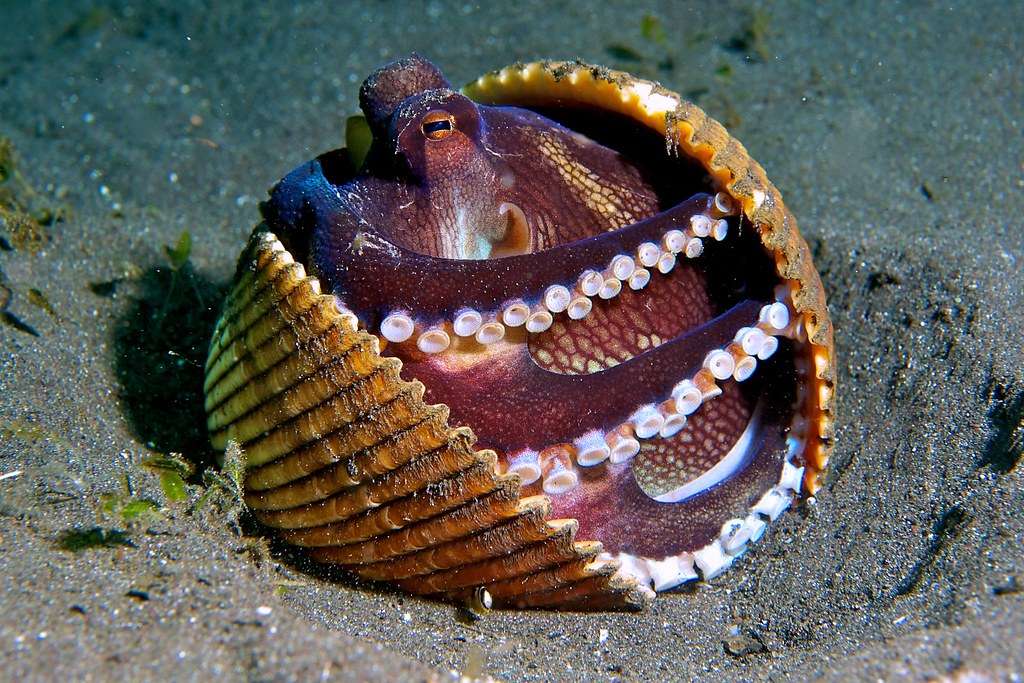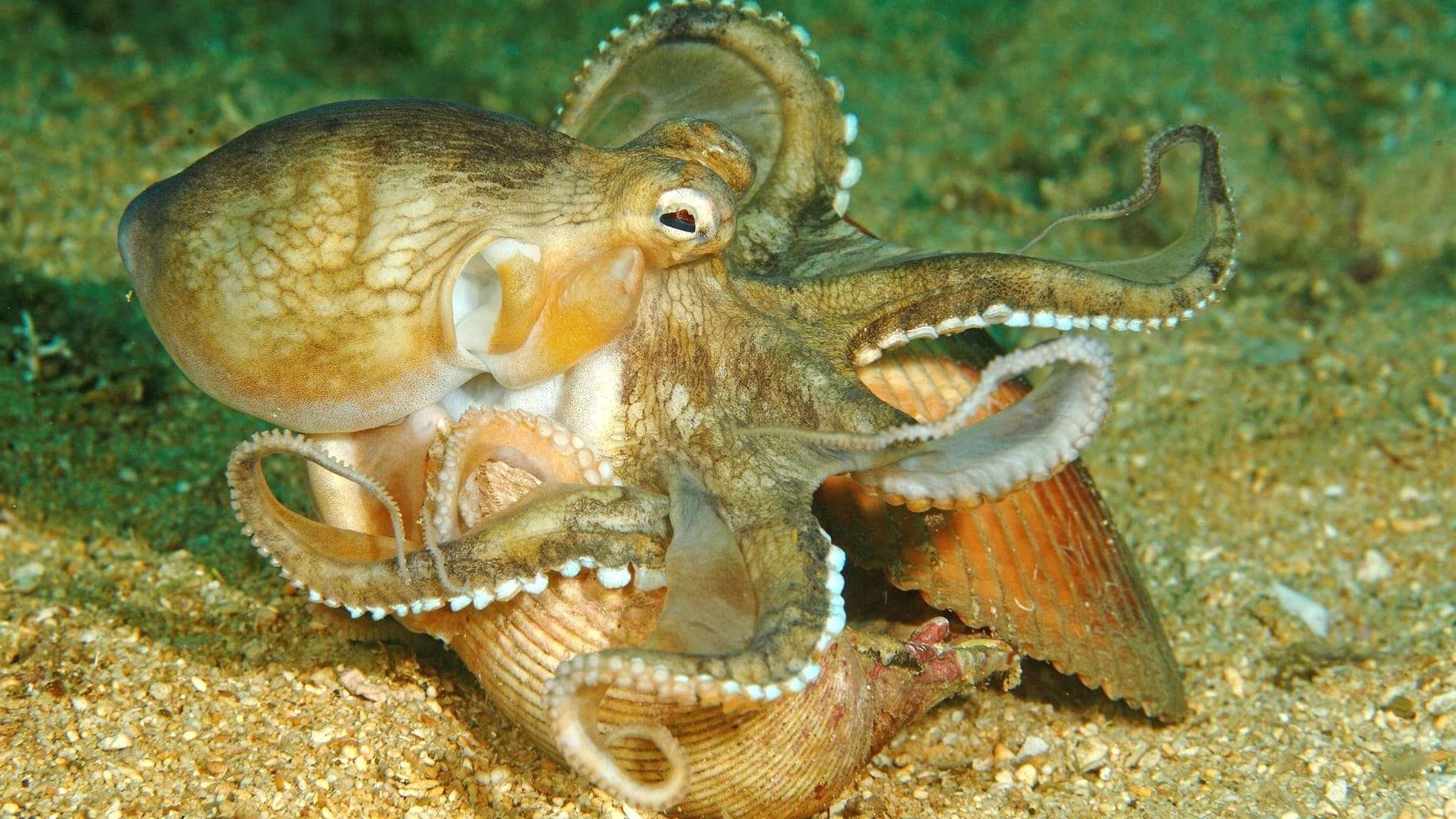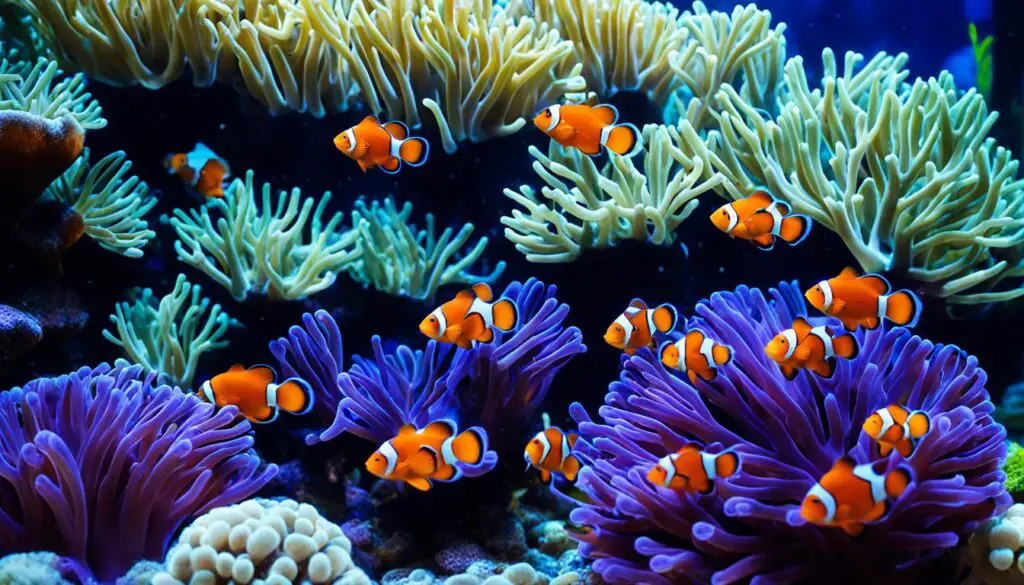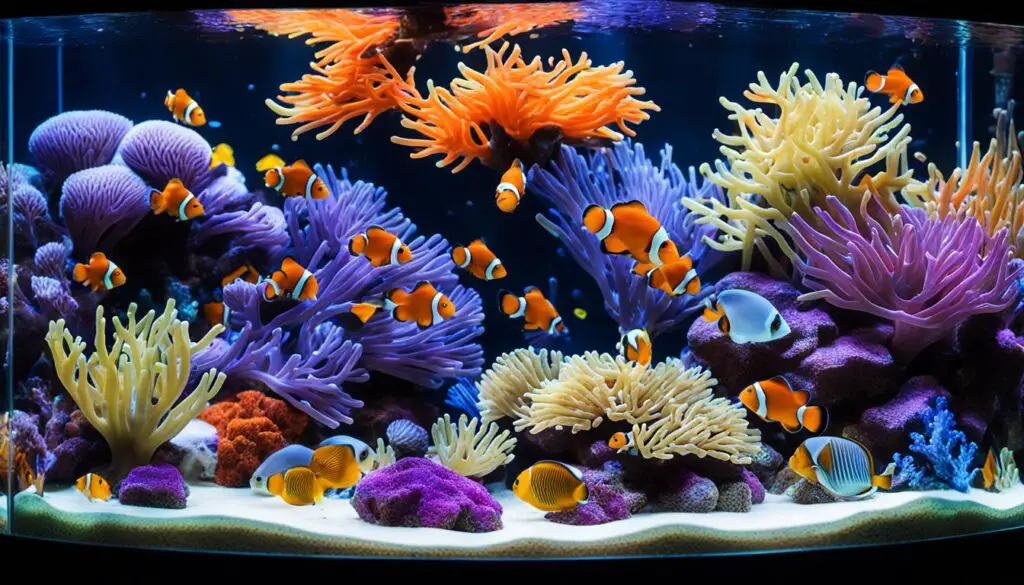Is Octopus A Shellfish

Introduction
Is Octopus A Shellfish: Octopus is classified as a shellfish is a common query in the realm of seafood. Octopus, despite its appearance and association with the underwater world, is not actually a shellfish. Shellfish typically refer to aquatic creatures with shells or exoskeletons, such as crabs, lobsters, clams, and oysters.
Octopuses, on the other hand, belong to a completely different branch of the animal kingdom known as mollusks, which also includes creatures like snails and squids. They are part of the class Cephalopoda, characterized by their soft, boneless bodies and tentacles equipped with suction cups. Octopuses are highly intelligent and known for their unique hunting techniques and ability to adapt to various marine environments.
In the culinary world, octopus mollusks have a sought-after delicacy enjoyed in many cultures. Its tender meat is prized for its distinct flavor and versatility in cooking. So, while octopus may not be a shellfish, it remains a fascinating and delectable component of seafood cuisine, worth exploring for its culinary appeal and intriguing biology.

Is octopus a shellfish?
Types of shellfish
Mollusks include squid, octopus, mussels, snails, clams, oysters, abalone and scallops.
Octopus is not considered a shellfish. Shellfish is a broad term that refers to various aquatic creatures with shells or exoskeletons, such as crabs, lobsters, clams, mussels, oysters, and shrimp. Octopuses, on the other hand, belong to a different taxonomic group entirely. Octopuses are classified as mollusks, specifically in the class Cephalopoda. This class includes other cephalopods like squids and cuttlefish. While octopuses do share some distant evolutionary history with shellfish due to their common ancestry in the mollusk phylum, they have distinct characteristics that set them apart. Here are some key differences between octopuses and shellfish:
- Body Structure: Octopuses have soft, gelatinous bodies without any external shells or exoskeletons. In contrast, shellfish have hard shells or exoskeletons that protect their bodies.
- Tentacles: Octopuses have long, flexible tentacles equipped with suction cups, which they use for capturing prey and moving around. Shellfish do not possess tentacles like octopuses.
- Mobility: Octopuses are highly mobile and can swim, crawl, and even jet-propel themselves through water. Shellfish typically have limited mobility and rely on filter-feeding or slow crawling.
- Culinary Use: Octopus is renowned for its unique texture and flavor in culinary dishes. It is often prepared in various ways, such as grilling, boiling, or serving as sushi. Shellfish, on the other hand, are valued for their own distinct flavors and are prepared differently.
Octopus and shellfish are distinct groups within the broader category of seafood. While octopus is a mollusk and lacks a shell or exoskeleton, shellfish are characterized by their hard protective shells or exoskeletons, making them separate entities in the world of aquatic cuisine and taxonomy.
Is octopus shellfish allergy?
Molluscan shellfish allergies have been documented to all classes of mollusks including gastropods (e.g., limpet, abalone), bivalves (e.g., clams, oysters, mussels), and cephalopods (e.g., squid, octopus). Tropomyosin, a major muscle protein, is the only well-recognized allergen in molluscan shellfish.
Octopus is not typically associated with shellfish allergies. Shellfish allergies generally fall into two categories: crustaceans and mollusks. Crustaceans include animals like crabs, lobsters, and shrimp, while mollusks encompass creatures such as clams, mussels, oysters, and scallops.
Octopus, on the other hand, is a cephalopod mollusk, which is distinct from the shellfish categories mentioned above. While some people may have allergies to mollusks, such as clams or mussels, this does not necessarily mean they will also be allergic to octopus.
Allergies are specific to certain proteins found in particular foods. In the case of shellfish allergies, the allergenic proteins are generally unique to crustaceans or mollusks, and they are different from the proteins found in octopus.
Individuals with known food allergies, including shellfish allergies, to exercise caution when trying new foods or dishes. Cross-contamination can occur in restaurants or food preparation settings, so it’s crucial to inform servers or chefs about any allergies to ensure safe food handling practices.
If you suspect you have a shellfish allergy or any food allergy, it’s advisable to consult with an allergist or healthcare professional for proper testing, diagnosis, and guidance on managing your dietary restrictions.
What type of shellfish is octopus?
Mollusks, like clams, mussels, oysters, scallops, octopus, or squid.
Octopus is not classified as a shellfish. Octopuses belong to a different class of marine animals called “Cephalopoda,” which includes creatures like squids and cuttlefish. These animals are characterized by their soft, often gelatinous bodies and the absence of a hard, external shell or exoskeleton, which distinguishes them from shellfish.
In contrast, shellfish is a broad term used to describe a variety of aquatic invertebrates that possess shells or exoskeletons to protect their bodies. Shellfish include groups like mollusks (e.g., clams, oysters, mussels, and scallops) and crustaceans (e.g., shrimp, crabs, and lobsters). These creatures are part of different taxonomic classes, such as Bivalvia for clams and Gastropoda for snails, within the larger phylum Mollusca, or Malacostraca for many crustaceans within the phylum Arthropoda.
Octopuses, on the other hand, have a soft, muscular body and are known for their intelligence, adaptability, and unique methods of defense and predation. They are not considered shellfish and belong to a separate branch of the animal kingdom.
What category of fish is octopus?
An octopus is neither a fish nor a mammal. Instead, octopuses are cephalopods related to squid and cuttlefish. The octopus is classified as one branch of mollusks.
Octopus is not a fish; it belongs to a different category within the animal kingdom. Octopuses are classified as cephalopod mollusks, specifically in the class Cephalopoda. Here’s why octopuses are not considered fish:
- Taxonomic Classification:
- Fish belong to the vertebrate group of animals, which means they have a backbone or vertebral column. They are part of the class Osteichthyes (bony fish) or the class Chondrichthyes (cartilaginous fish), depending on whether they have bony or cartilaginous skeletons.
- Octopuses, on the other hand, are invertebrates, meaning they lack a backbone. They belong to the phylum Mollusca and are placed in the class Cephalopoda, along with other cephalopods like squids and cuttlefish.
- Body Structure:
- Fish typically have streamlined bodies with fins and scales covering their skin.
- Octopuses have soft, gelatinous bodies without scales or fins. Instead, they have tentacles equipped with suction cups that they use for locomotion and hunting.
- Respiratory System:
- Fish breathe through gills, extracting oxygen from water.
- Octopuses, on the other hand, have specialized structures called gills, but they are adapted for extracting oxygen from water and, in some cases, from the air.
- Reproduction:
- Fish reproduce either by laying eggs or giving birth to live young, depending on the species.
- Octopuses have a unique reproductive strategy where females lay eggs, and males often die shortly after mating.
Octopuses are not fish; they are cephalopod mollusks. They differ significantly from fish in terms of their taxonomy, body structure, respiratory system, and reproductive methods. While both octopuses and fish are aquatic creatures, they belong to distinct branches of the animal kingdom.
Are octopus and squids classified in shellfish category?
Classification. Octopus and squid belong to a group of marine invertebrates known as cephalopods. Cephalopod means ‘head-footed’ – the arms and tentacles are derived from the head. Their closest relatives are snails, slugs, chitons and shellfish, collectively known as molluscs.
octopuses and squids are not classified in the shellfish category. Shellfish is a broad culinary and biological category that typically includes aquatic animals with shells or exoskeletons, but octopuses and squids do not possess such characteristics. To understand this distinction better, let’s explore the classifications of octopuses, squids, and shellfish:
- Octopuses:
- Octopuses belong to the class Cephalopoda within the phylum Mollusca.
- They have soft, gelatinous bodies without any external shells or exoskeletons.
- Octopuses are highly intelligent marine animals known for their complex behaviors, adaptability, and unique hunting techniques.
- They possess long, flexible tentacles, often equipped with suction cups, which they use for capturing prey and manipulation.
- Octopus meat is prized in culinary circles for its tenderness, flavor, and versatility in various dishes, such as sushi, stews, grills, and salads.
- Squids:
- Squids also belong to the class Cephalopoda within the phylum Mollusca, just like octopuses.
- They have elongated, torpedo-shaped bodies with soft tissue and a cartilaginous internal structure called a pen.
- Squids are known for their streamlined bodies, powerful jet propulsion, and tentacles equipped with suction cups and sometimes hooks.
- Like octopuses, squid is a popular ingredient in various cuisines and is used in dishes such as calamari.
Both octopuses and squids are cephalopod mollusks and do not have shells or exoskeletons, which are characteristic of shellfish. While all three groups may be enjoyed as seafood, they are taxonomically distinct and fall into separate categories within the world of marine life and cuisine.
What are the three categories of fish and shellfish?
Mollusks are shelled animals like oysters and mussels, crustaceans are animals with an exoskeleton like shrimp, prawns and lobsters, and echinoderms have a spiny skin, like sea urchins and sea cucumbers.
In the culinary and seafood industry, fish and shellfish are typically categorized into three main groups based on their biological characteristics and culinary uses. These categories are:
- Finfish:
- Finfish, also known as bony fish, are characterized by their bony skeletons, scales covering their skin, and the presence of fins.
- This category includes a vast array of species, ranging from freshwater fish like trout, salmon, and catfish to saltwater fish like cod, tuna, and snapper.
- Finfish are highly diverse in terms of flavor, texture, and culinary applications. They can be baked, grilled, fried, poached, or used in various dishes, such as sushi, sashimi, and fish tacos.
- Crustaceans:
- Crustaceans are a group of shellfish characterized by their hard exoskeletons, jointed appendages, and segmented bodies.
- Common examples of crustaceans include crabs, lobsters, shrimp, crayfish, and prawns.
- Crustaceans are known for their sweet and succulent meat, often enjoyed through boiling, steaming, grilling, or in dishes like crab cakes and shrimp scampi.
- Mollusks:
- Mollusks are another category of shellfish, but they differ from crustaceans in that they have soft, unsegmented bodies. Most mollusks have shells, but in some, like octopuses and squids, the shells are internal or absent.
- Mollusks include a variety of species, such as clams, mussels, oysters, scallops, snails, octopuses, and squids.
- These shellfish are appreciated for their diverse flavors and textures. They are prepared in various ways, including steaming, baking, frying, grilling, or serving raw as in oysters and sashimi.
These categories are not exhaustive, as there are many other species of fish and shellfish with distinct characteristics and culinary uses. However, these three broad categories serve as a foundational framework for classifying and understanding seafood, both in terms of its biological diversity and its role in the culinary world.
Is octopus similar to shellfish?
Types of shellfish
Mollusks include squid, octopus, mussels, snails, clams, oysters, abalone and scallops.
Octopus is not similar to shellfish. While both octopus and shellfish fall under the umbrella of seafood, they are distinct in several key ways:
- Taxonomy:
- Octopus is classified as a cephalopod mollusk, specifically in the class Cephalopoda within the phylum Mollusca. This places octopus in the same class as squids and cuttlefish.
- Shellfish, on the other hand, is a broader category that includes aquatic animals with shells or exoskeletons. It comprises two primary groups: crustaceans (e.g., crabs, lobsters, shrimp) and mollusks (e.g., clams, mussels, oysters, scallops).
- Body Structure:
- Octopus has a soft, gelatinous body without any hard external shell or exoskeleton. It is characterized by its flexible tentacles, often equipped with suction cups, which it uses for capturing prey.
- Shellfish, by definition, have shells or exoskeletons that protect their bodies. These shells can vary in size, shape, and composition depending on the specific type of shellfish.
- Locomotion:
- Octopuses are highly mobile and can swim, crawl, and even jet-propel themselves through water using water propulsion from their siphons.
- Many shellfish, such as clams and mussels, have limited mobility and rely on filter-feeding or slow crawling.
- Culinary Use:
- Octopus is known for its unique flavor and texture. It is a sought-after ingredient in many cuisines and can be prepared in various ways, including grilling, boiling, and serving as sushi or sashimi.
- Shellfish, whether crustaceans or mollusks, have their own distinct flavors and culinary applications. They are often steamed, boiled, grilled, or shucked and served raw, depending on the specific type.
Octopus and shellfish are two separate categories within the broader spectrum of seafood. Octopus is a cephalopod mollusk with soft, boneless bodies and unique tentacles, while shellfish encompass various aquatic animals with hard shells or exoskeletons. Their differences in taxonomy, body structure, locomotion, and culinary use make them distinct from one another despite both being cherished components of seafood cuisine.
Why is octopus considered shellfish?
Mollusks: Mollusks encompass animals that are found both underwater and on land! In the case of seafood-based mollusks, these include clams, oysters, scallops, octopus, and squid. They have a highly structured nervous system and a radula used for feeding, which is why octopuses and squid fall into this category.
Octopus is not considered a shellfish; it is a cephalopod mollusk. The classification of octopus as a shellfish is incorrect from both a biological and culinary standpoint. Here are several reasons why octopus is not classified as shellfish:
- Taxonomic Classification:
- Octopus belongs to the class Cephalopoda within the phylum Mollusca. This class includes other cephalopod mollusks such as squids and cuttlefish.
- Shellfish, on the other hand, is a broader category that includes aquatic animals with shells or exoskeletons, and it is divided into crustaceans (e.g., crabs, lobsters, shrimp) and mollusks (e.g., clams, mussels, oysters, scallops).
- Lack of Shell or Exoskeleton:
- Octopuses have soft, gelatinous bodies without any hard external shells or exoskeletons. Instead, they have flexible, muscular tentacles.
- Shellfish are characterized by the presence of shells or exoskeletons that protect their bodies. The hard outer shells are a defining feature of shellfish.
- Morphological Differences:
- Octopuses have a distinct body structure with a head, mantle, and tentacles. They move using jet propulsion and are known for their intelligence and complex behaviors.
- Shellfish exhibit various body structures depending on their specific type (e.g., clams, crabs, lobsters), but they generally have segmented bodies with appendages or shells that cover their body.
- Culinary and Culinary Allergen Distinction:
- Octopus has its own unique taste and texture, and it is used in various culinary dishes worldwide. It is often prepared by grilling, boiling, or serving as sushi or sashimi.
- Shellfish, whether crustaceans or mollusks, are distinct in flavor and culinary use. People with shellfish allergies react to proteins found in shellfish, which are different from those found in octopus.
Octopus is not considered shellfish due to its distinct biological characteristics and classification within the mollusk family. Understanding the correct classification of seafood is essential for both culinary and dietary purposes, as well as for avoiding allergenic reactions in individuals with shellfish allergies.

Conclusion
Octopus is unequivocally not a shellfish. The misconception that octopus falls into the shellfish category stems from a misunderstanding of its biological classification and culinary characteristics. Octopus is a cephalopod mollusk, belonging to the class Cephalopoda within the phylum Mollusca. It possesses a soft, boneless body without the hard external shells or exoskeletons typical of shellfish.
Shellfish, on the other hand, is a broader term used to describe aquatic creatures that have shells or exoskeletons. This category encompasses two primary groups: crustaceans (like crabs and lobsters) and mollusks (such as clams and mussels). Octopus shares its classification with other cephalopods like squids and cuttlefish, and it stands apart from shellfish in terms of anatomy, locomotion, and culinary use.
The distinction between octopus and shellfish is crucial for both understanding the diversity of marine life and ensuring accurate culinary preparation, dietary choices, and allergen considerations. While octopus and shellfish may both grace our plates as delicious seafood options, their biological differences firmly place octopus outside the realm of shellfish.



